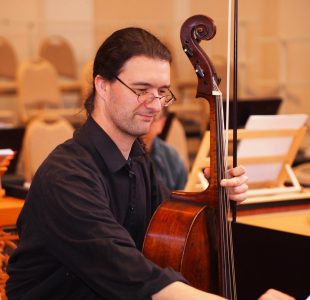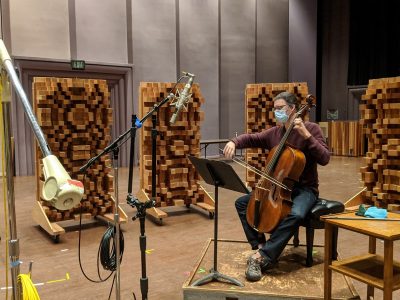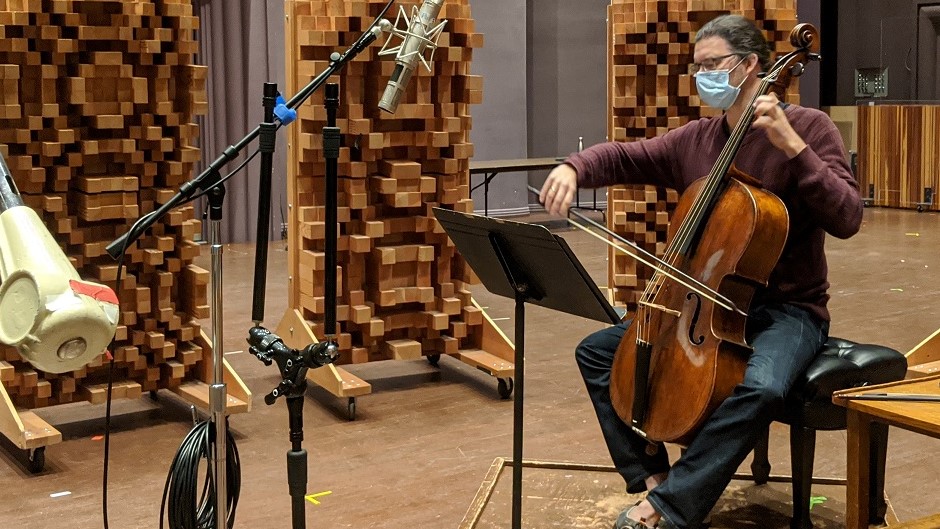Our Early Music for Modern Instruments series continues with an October 17 online workshop taught by William Skeen, a principal cellist with Philharmonia Baroque Orchestra and American Bach Soloists. Bill is also the co-founder of the New Estherhazy Quartet, whose repertoire includes more than 150 string quartets performed exclusively on gut strings. He spoke with us from his home in Oakland to give us a glimpse into the life of an early-music specialist.

What was your introduction to music?
I grew up in South Florida, which is known for a lot of things but not classical music. But we did have an excellent public school system geared toward the arts. In third grade my school started a string quartet, and I played the double bass. I mean, what boy wouldn’t love the double bass? Later I switched to the viola, probably because I was tall for my age and one of the few kids who could reach that far. I also picked up the French horn. It was my father, a classical music fan, who steered me to cello.
One of the advantages of South Florida is its large population of retired classical musicians, many of them very accomplished. When I was 12 I was thrust into a Beethoven string quartet with a bunch of octogenarians!
When did you start specializing in Baroque music?
I had an uncle in Boston who used to send musical gifts. One of them was a recording of Bach’s Brandenburg Concertos, so I was exposed to the sound in high school. The first time I played a period instrument was in college, at the Cleveland Institute of Music [CIM]. My cello teacher there wasn’t a Baroque specialist, but a former student had left his Baroque instrument behind, and my teacher suggested I try it. Then, in my junior year, the cellist dropped out of the Baroque Orchestra at Case Western Reserve, which is CIM’s academic partner. My teacher told them “that Skeen guy is really good at Bach,” and I ended up playing with them. I never had formal lessons—many Baroque musicians of my generation or older didn’t. At CIM and later in grad school, at USC, I had some mentors, but mostly I just figured it out on my own.
What are the primary differences between modern and Baroque cellos?
What you notice right away is that there’s no end pin in the Baroque cello. Also, the tailpiece that holds the strings to the bottom of the instrument is smaller. The bridge is cut more slim, and sometimes the fingerboard is shorter—most repertory doesn’t go very high up in the range. And of course modern cellos have metal strings, while Baroque cellos have strings made of sheep’s gut—twisted strands of dried intestine.
Tell us about your own Baroque cello.
My instrument is a five-string cello from about 1680, probably Italian. A friend of mine, Todd French, was working as the instrument appraiser at an auction house when this instrument came through. Todd was also a cellist, and he found a way to buy it. He played it for about 10 years, and sometimes I would sit next to him and admire his wonderful cello. Eventually he changed professions and said I could borrow the instrument. In 2008, during the economic downturn, he needed to sell it quickly. He told me if I wanted to buy it I’d have first dibs. I took out a loan and bought it.
I learned from the luthier who did the restorations on it that this cello is a Holocaust survivor. It was brought out of Europe in the 1930s by a Jewish family from the Netherlands; they shipped it in a trunk that’s covered with stickers from many countries. The descendants of the family still have the trunk in their home in California.

Now that touring and performing are on hold, how have you been spending your time?
I feel very lucky, actually. Voices of Music [an Early Music ensemble based in San Francisco] had been after me to join the editing team for their videos. I’d never had time previously, but now I do. And my partner raised money for me to do my own recording of Bach’s Cello Suites. In August I spent six days at Skywalker Ranch in Marin County making the recording, with AMN founder Lolly Lewis as my producer. Because of COVID, we had to wear masks all day, every day, for many hours of recording. But it was a great experience. I expect the recording to be released sometime in 2022.
